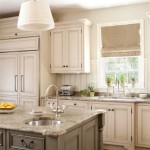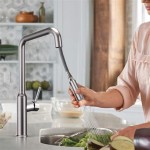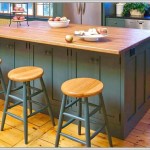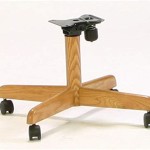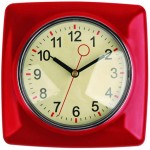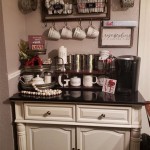Shelving for Kitchen: A Comprehensive Guide
In the culinary landscape of a kitchen, organization reigns supreme. Among the arsenal of tools and appliances, efficient shelving plays a pivotal role in maximizing space and creating a harmonious environment for cooking and meal preparation. This guide explores the multifaceted world of kitchen shelving, delving into its types, benefits, and considerations for seamless integration into any culinary sanctuary.
Types of Kitchen Shelving
The range of kitchen shelving options caters to a spectrum of needs and aesthetic preferences. Understanding the different types available empowers home cooks to select the perfect solution for their space:
- Open Shelving: This minimalist approach offers a contemporary aesthetic by showcasing crockery, glassware, and decorative accents. Open shelving excels in smaller kitchens, visually expanding the space by minimizing visual barriers. However, it requires meticulous organization to maintain a pristine look.
- Closed Shelving: Cabinets with doors provide a more traditional and practical approach. Closed shelving offers discreet storage for items like pantry staples, cleaning supplies, or less aesthetically appealing cookware. Opting for glass doors allows for visual inventory while maintaining a sense of order.
- Floating Shelves: This modern design element adds a touch of sophistication and maximizes wall space. Floating shelves are ideal for showcasing treasured items, cookbooks, or decorative accents while minimizing visual clutter.
- Wall-Mounted Shelving: These modular systems offer a flexible and customizable solution. Wall-mounted shelves come in various sizes, materials, and configurations, allowing for tailored storage solutions for different needs.
- Corner Shelving: Corner spaces, often overlooked, can be transformed into valuable storage zones. Corner shelving units maximize vertical space and provide a dedicated spot for infrequently used items.
Benefits of Kitchen Shelving
The integration of shelving into a kitchen brings a myriad of benefits that enhance functionality, aesthetics, and overall culinary experience.
- Increased Storage Capacity: Shelving provides a dedicated space for organizing and storing a wide array of kitchen items, from pantry staples to cookware and appliances. The vertical arrangement maximizes vertical space, freeing up valuable countertop space.
- Enhanced Accessibility: Strategically placed shelves ensure easy access to frequently used items, streamlining culinary workflows. Grouping similar items together minimizes search time and fosters efficiency in the kitchen.
- Improved Aesthetics: Well-designed shelving adds a touch of elegance and sophistication to the kitchen. Open shelving allows for personalized displays of cherished crockery, glassware, and decorative elements, creating a visually appealing backdrop for culinary creativity.
- Flexibility and Scalability: Shelving systems often offer flexible configurations, allowing users to adjust the layout as their needs evolve. Modular systems can be expanded or rearranged to accommodate changing storage requirements.
Considerations for Choosing Kitchen Shelving
Selecting the right shelving for a kitchen requires careful consideration of several factors to ensure an optimal match for individual needs and preferences.
- Kitchen Size and Layout: The size and layout of the kitchen significantly influence the type and placement of shelving. Compact kitchens may benefit from wall-mounted or floating shelves to maximize space, while larger kitchens offer more flexibility for various shelving solutions.
- Style and Aesthetic: The chosen shelving should complement the overall kitchen style. Contemporary kitchens might embrace minimalist open shelving, while traditional kitchens may favor closed cabinets.
- Budget and Material: Shelving options come in various materials, ranging from budget-friendly wood to high-end metal and glass. Determine a budget and select materials that align with both financial constraints and aesthetic preferences.
- Storage Needs: The type and quantity of items to be stored influence the design and functionality of the shelving. Consider the weight capacity, shelf depth, and compartment size to ensure an appropriate storage solution.
- Maintenance Requirements: Open shelving requires regular cleaning and organization to maintain a pristine look. Closed cabinets offer more discreet storage, but may require occasional dusting and cleaning.
By carefully considering these factors, home cooks can select shelving that seamlessly integrates into their kitchen space, promoting organization, functionality, and a visually appealing culinary haven.

The Complete Guide To Kitchen Organization And Storage Shk

5 Step Ultimate Guide How To Organize The Perfect Pantry Cash And Kerry

Blog Larders Direct
Your Ultimate Guide To A Tidy Kitchen 8 Steps Organization Bliss Streamlined Living

A Comprehensive Guide For Cabinet Accessories

Open Shelving Kitchen Designs Guide Oppolia

Your Ultimate Guide To Kitchen Storage Organization The Cambro Blog

A Complete Guide To Kitchen Cabinet Organizers N Hance

Ultimate Guide To Storage Ideas For A Small Kitchen Worthing Court Diy Home Decor Made Easy

Kitchen Storage The Container
Related Posts

